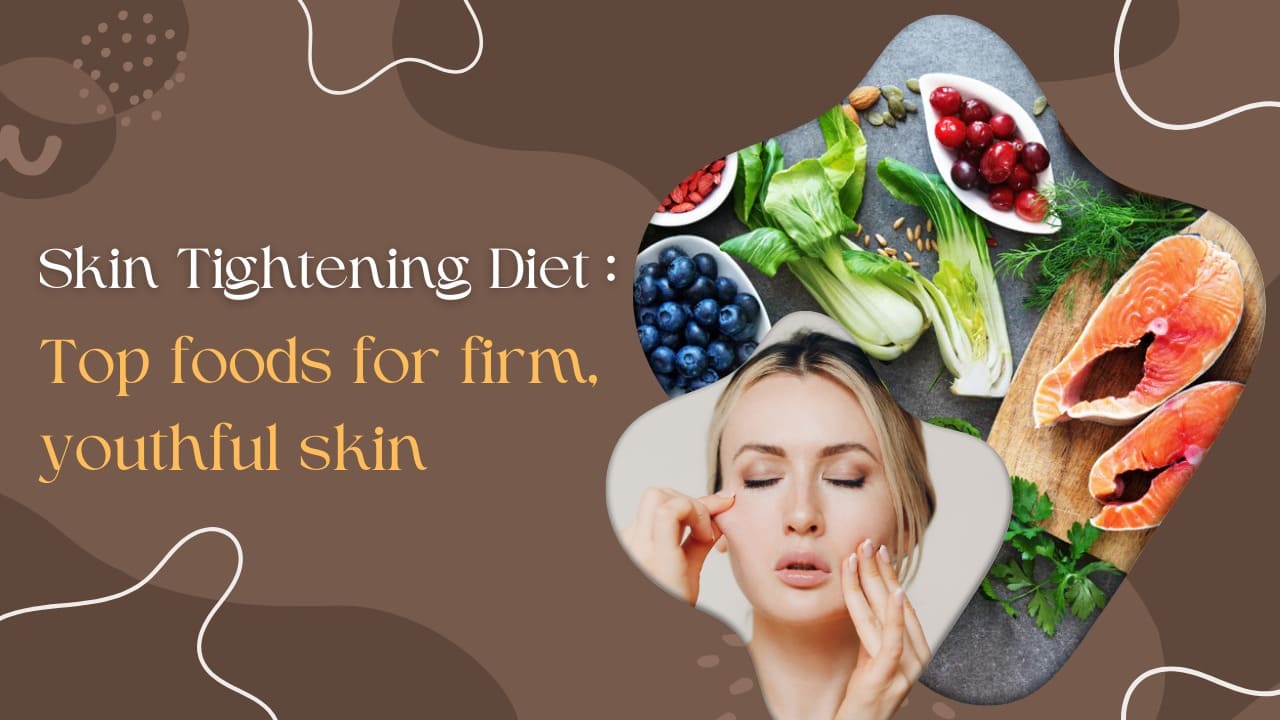A skin tightening diet isn’t a short-term solution—it’s a long-term way of eating that helps your skin stay firm and youthful over time. Instead of relying on quick fixes, this diet focuses on nourishing your body with the right nutrients to support skin health from within.
The key is to eat whole foods that are full of vitamins, minerals, protein, and healthy fats. These nutrients help your body produce collagen and elastin, which are important for keeping your skin firm and smooth. Protein-rich foods and good fats also help the skin stay hydrated and repair itself naturally.
By eating this way, you also reduce inflammation and protect your skin from damage caused by stress and harmful toxins. The result is healthier, more youthful-looking skin that feels tighter and looks refreshed. This diet not only supports your skin’s appearance but also boosts your overall health and well-being.
How Does Diet Influence Skin Elasticity ?
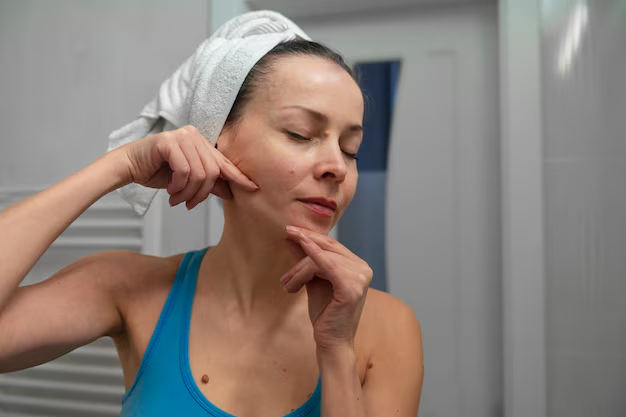
Collagen and elastin are proteins in your skin that help keep it firm and tight. To support their production, your body needs key nutrients like vitamin C, zinc, omega‑3 fatty acids, and amino acids. These work together to build and maintain strong, elastic skin.
A good skin tightening diet also includes antioxidants, which protect your skin from damage caused by free radicals. Eating anti-inflammatory foods helps slow the aging process, while staying well-hydrated supports skin elasticity and smoothness over time.
Research shows that a diet rich in vegetables, olive oil, fish, and legumes is linked to fewer wrinkles and healthier skin. On the other hand, high intake of sugar, dairy, butter, and margarine is connected to more visible signs of aging. A balanced skin tightening diet provides the right mix of nutrients to support firm, glowing skin from the inside out.
Top Skin‑Tightening Foods
Omega-3 Fatty Acid‑Rich Fish and Seeds
What is it?: Foods rich in omega‑3 fatty acids are an important part of a healthy skin tightening diet. Omega‑3s help keep your skin soft, hydrated, and elastic. They also reduce inflammation, which can speed up aging and lead to sagging skin.
Great sources of omega‑3s include fatty fish like salmon, mackerel, and sardines. These fish are packed with healthy fats that support your skin’s structure and help improve its firmness over time. For plant-based options, chia seeds, flaxseeds, and walnuts are excellent choices.
Including these foods regularly in your meals can improve how your skin looks and feels. A skin tightening diet that includes omega‑3-rich foods supports collagen, reduces dryness, and protects against environmental stress. Over time, this can lead to smoother, firmer skin with fewer signs of aging.
How does it help?: Omega‑3s strengthen cell membranes, reduce inflammation, and maintain skin moisture and plumpness—all key to firmness and reducing sagging
Salmon, mackerel, sardines are top choices for moisture retention and elasticity
Chia and flax seeds help hydrate the skin, preserve collagen/elastin, and inhibit enzymes that break them down
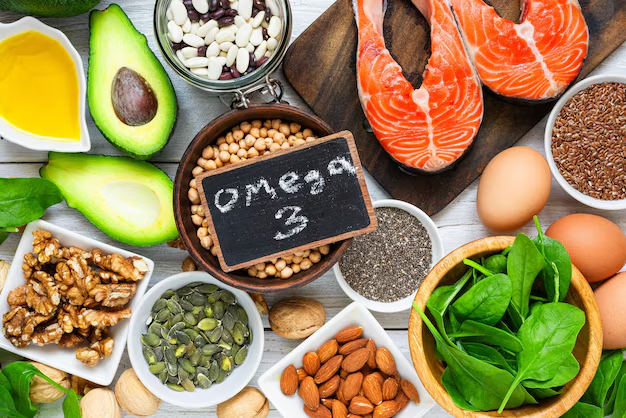
Vitamin C‑Rich Citrus Fruits and Berries
What is it?: Fruits like oranges, grapefruits, lemons, strawberries, blueberries, and raspberries are rich in vitamin C and antioxidants. These nutrients help boost collagen production, which is important for firm and youthful skin. Including these fruits in a skin tightening diet can make a big difference in skin texture and elasticity.
Citrus fruits, such as oranges and lemons, are especially helpful because they support skin repair and protect against sun damage. Berries, on the other hand, are packed with powerful antioxidants that fight free radicals and reduce signs of aging like wrinkles and fine lines.
Eating a variety of these fruits daily helps nourish your skin from within. A skin tightening diet that includes vitamin C-rich fruits keeps your skin hydrated, bright, and firm. It’s an easy and natural way to support healthier skin through the foods you eat every day.
How does it help?: Vitamin C is vital for collagen synthesis and antioxidant defense. Berries and citrus deliver anthocyanins, ellagic acid, and vitamin C—boosting skin strength and fighting wrinkles
Berries also improve blood flow, reduce inflammation, and protect collagen
Avocados & Healthy Monounsaturated Fats
What is it?: Avocados, olive oil, nuts, and seeds are excellent sources of healthy fats that play a key role in skin health. These foods help keep your skin soft, smooth, and elastic. Adding them to your meals can greatly benefit a skin tightening diet by supporting moisture and firmness from within.
Avocados and olive oil are rich in monounsaturated fats and antioxidants, which protect the skin from damage and help maintain its structure. Nuts and seeds, like almonds, sunflower seeds, and chia seeds, provide vitamin E and omega‑3s—both important for reducing inflammation and keeping the skin nourished.
Including these healthy fats regularly can improve your skin’s texture and help reduce dryness. A skin tightening diet that features these foods supports collagen production and keeps your skin looking firm and youthful. These simple, natural options are easy to add to your daily routine for long-term skin benefits.
How does it help?: These fats hydrate skin, support vitamin absorption, protect against UV damage, and feed collagen production. Avocados themselves are rich in vitamins E, C, A, lutein, and potassium
Almonds, walnuts, and flaxseed also provide vitamin E and omega‑3s to support skin barrier and elasticity
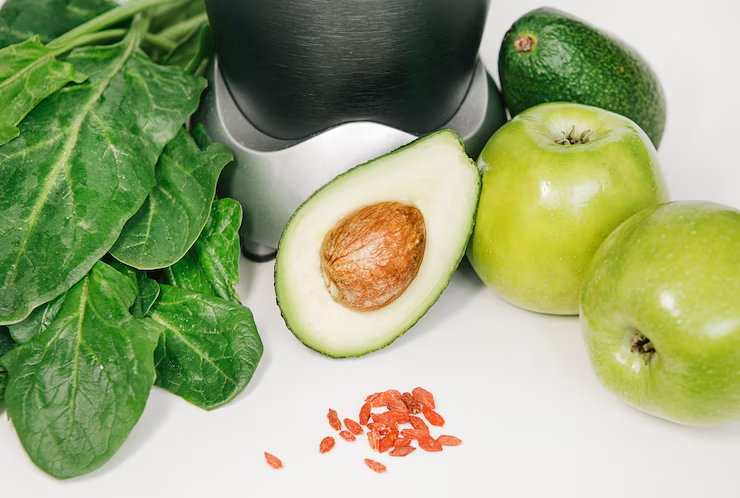
Lean Protein & Collagen‑Boosting Foods
What is it?: Protein-rich foods like fish, poultry, eggs, lentils, chickpeas, tofu, Greek yogurt, and bone broth are essential for healthy skin. These foods provide amino acids, which are the building blocks of collagen and elastin—two key proteins that keep your skin firm and tight. Including them in your skin tightening diet supports your skin from the inside out.
Fish and eggs are excellent sources of high-quality protein, while plant-based options like lentils, chickpeas, and tofu are great for those following vegetarian diets. Bone broth is especially beneficial as it contains collagen, which may help improve skin strength and texture over time.
A skin tightening diet rich in these protein sources helps your skin repair, renew, and stay elastic. Regularly eating these foods can reduce sagging, improve tone, and support a more youthful look. Protein is a vital part of any diet aimed at firm, glowing skin.
How does it help?: Collagen synthesis requires amino acids from protein sources. Bone broth provides collagen and amino acids like glycine and proline. Eggs offer connective tissue support via albumin and vitamins A, D, E, biotin, and zinc
Legumes and plant proteins are excellent for vegetarians
Leafy Greens & Cruciferous Vegetables
What is it?: Leafy greens like spinach, kale, broccoli, Brussels sprouts, and Swiss chard are packed with skin-loving nutrients. They provide vitamins A, C, and K, as well as antioxidants that protect skin cells from damage. Adding these vegetables to your meals supports a healthy skin tightening diet and helps your skin stay firm and clear.
These greens help boost collagen production, fight inflammation, and improve blood flow to the skin. Kale and spinach, in particular, are rich in lutein and beta-carotene, which can enhance skin elasticity and brightness. Broccoli and Brussels sprouts offer additional fiber and minerals that support overall health.
Eating a variety of these vegetables daily strengthens your body and your skin. A skin tightening diet that includes leafy greens can reduce signs of aging, improve skin texture, and keep your skin looking fresh and youthful naturally.
How does it help?: These are rich in vitamins A, C, K, lutein, folate, fiber, and antioxidants. They support collagen, cell turnover, detoxification, and reduce oxidative stress
Broccoli and kale provide extra vitamin C, K, and lutein for structural support and UV protection
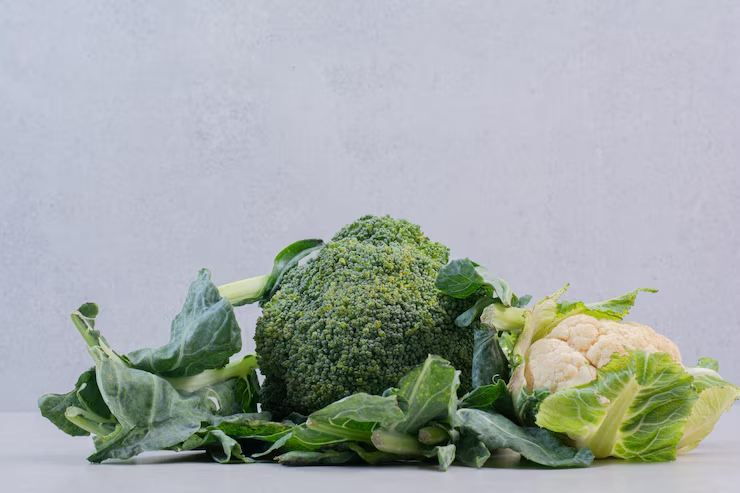
Hydration & Water‑Rich Foods
What is it?: Staying hydrated is key for healthy, firm skin. Water, cucumber, watermelon, coconut water, celery, and mint all help keep your skin moisturized from the inside. These hydrating foods support a skin tightening diet by maintaining skin elasticity and reducing dryness and dullness.
Cucumber and watermelon have high water content and are rich in vitamins that refresh and cool the skin. Coconut water is full of electrolytes, which help keep your skin balanced and smooth. Celery and mint also add hydration and help flush out toxins, which can lead to clearer, healthier skin.
Drinking plenty of fluids and eating water-rich foods daily is an easy way to care for your skin. A skin tightening diet that includes these hydrating options can improve the skin’s texture, support firmness, and give you a naturally glowing look over time. Hydration is just as important as nutrition in skin care.
How does it help?: Proper hydration keeps skin plump and elastic. Water‑rich foods supplement fluid intake and maintain moisture, helping prevent dryness and sagging
Coconut water and buttermilk benefit especially in hot climates like India
Zinc, Selenium & Gut‑Friendly Fermented Foods
What is it?: Pumpkin seeds, oysters, red meat, legumes, yogurt, kefir, kimchi, and sauerkraut are rich in zinc and probiotics, which are important for skin health. Zinc helps your body make collagen and repair damaged skin, making it a valuable part of a skin tightening diet. It also helps control inflammation and reduces breakouts.
Fermented foods like kefir, kimchi, yogurt, and sauerkraut contain probiotics that support gut health. A healthy gut improves nutrient absorption, which can lead to better skin tone and fewer signs of aging. Red meat and legumes also supply protein and iron, both of which help keep your skin firm and glowing.
Adding these foods to your meals supports healthy skin from within. A skin tightening diet that includes zinc-rich and probiotic foods can improve elasticity, reduce sagging, and promote a clear, radiant complexion over time. They work together to nourish your skin deeply and naturally.
How does it help?:
Zinc supports skin repair, collagen formation, and fights aging
Selenium, biotin, vitamin A and C from garlic and legumes support repair and antioxidant function
Probiotics help gut-skin axis: fermented foods reduce inflammation and improve nutrient absorption, leading to clearer, healthier skin
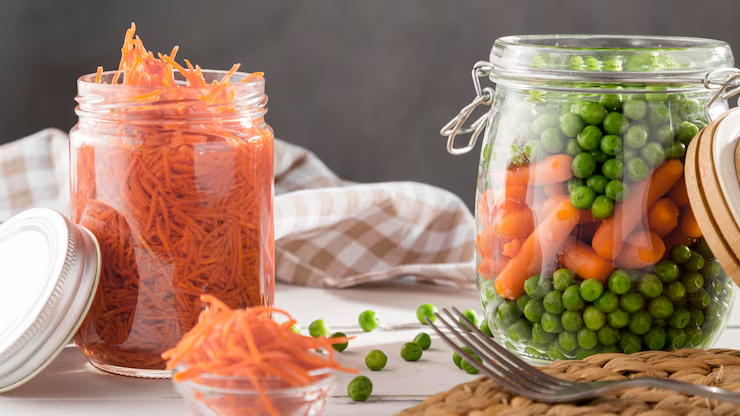
Supplementary Tips & Lifestyle Integration
Stay Hydrated Throughout the Day: Drinking at least 8 glasses of water daily is vital for maintaining skin moisture and elasticity. Hydrating foods like coconut water and cucumber can also support your body’s water needs, especially during hot weather. Good hydration is a key part of any effective skin tightening diet as it helps your skin look plump and firm.
Avoid Foods That Trigger Inflammation: A skin tightening diet should limit added sugars, processed foods, dairy, unhealthy fats like butter and margarine, and excess alcohol. These foods are linked to inflammation and can weaken your skin’s collagen and elastin, leading to sagging and wrinkles.
Protect Skin from Sun and Smoking: Sun exposure breaks down collagen, and smoking damages elastin, both of which reduce skin firmness. Always wear sun protection and avoid tobacco to support healthy, youthful-looking skin as part of your overall skin care and diet approach.
Get Enough Sleep and Manage Stress: Sleeping 7 to 9 hours each night helps your skin repair itself. Stress can speed up aging and cause inflammation, so include stress-reducing practices like meditation, deep breathing, or yoga to support your skin tightening diet and skin health.
Stay Active to Support Skin Tone: Regular exercise improves blood flow, delivers nutrients to the skin, and strengthens the muscles underneath. This helps your skin look tighter and more toned, working in harmony with a nutritious skin-supporting diet.
Sample Daily Meal Plan (Skin‑Tightening Focus)
| Meal | Ingredients |
|---|---|
| Breakfast | Greek yogurt + chia/flax + berries + sliced kiwi + honey |
| Snack | A handful of almonds & walnuts + orange slices |
| Lunch | Grilled salmon or tofu + quinoa + kale & spinach salad with olive oil dressing |
| Snack | Pumpkin seeds + apple or amla (Indian gooseberry) |
| Dinner | Bone broth or lentil soup + steamed broccoli + grilled chicken or paneer |
| Hydration | Water, coconut water, cucumber juice, herbal green tea |
Why This Diet Works: Summarized
Collagen Support: Vitamin C + protein + zinc + amino acids → firm skin matrix.
Hydration: Omega‑3 fats + water‑rich foods → moisture retention and fullness.
Antioxidant Protection: Vitamins E, A, polyphenols neutralize free radicals.
Inflammation Control: Omega‑3s, leafy greens, turmeric, fermented foods reduce damaging inflammation.
Skin Barrier Strength: Healthy fats, zinc, probiotics help rebuild a resilient epidermis.
What Not to Rely On
Supplements: Collagen powders, hyaluronic acid supplements may support skin, but whole-food sources are safer and better absorbed. Quality and contamination concerns exist; consult professionals
Banana Peel “Natural Botox”: Anecdotal skin smoothing may be due to lutein and potassium, but it’s not a scientific stand-in for nutrient-based skin firming
Conclusion

A skin tightening diet is a natural and long-term way to support firmer, healthier skin. By choosing nutrient-rich foods that boost collagen and elastin, reduce inflammation, and keep your body well-hydrated, you help your skin stay smooth, elastic, and youthful. This type of diet not only benefits your appearance but also improves overall health.
In addition to eating well, it’s important to protect your skin from harmful habits like smoking and overexposure to the sun. Getting enough sleep, managing stress, and staying physically active also play a big role in how your skin looks and feels. Together, these healthy habits support the skin’s ability to repair and stay firm.
Following a skin tightening diet means caring for your skin from the inside out. With consistency and balance, this approach helps reduce sagging, smooth out fine lines, and bring out a natural, healthy glow that lasts.
FAQs
Q.1 What is a skin tightening diet and how does it work ?
A skin tightening diet is a nutritional plan focused on consuming foods rich in vitamins, minerals, healthy fats, and proteins that promote collagen and elastin production. These nutrients help improve skin elasticity, firmness, and hydration from within, reducing the appearance of sagging and wrinkles.
Q.2 How long does it take to see results from a skin tightening diet ?
Visible improvements in skin tone and texture may begin in 4 to 8 weeks, depending on your consistency and overall lifestyle. Collagen renewal takes time, so the best results are seen with a long-term commitment to healthy eating and hydration.
Q.3 Can a skin tightening diet replace cosmetic procedures ?
While a skin tightening diet can significantly improve skin health and delay aging, it may not produce instant or dramatic changes like cosmetic treatments. However, it is a natural, non-invasive, and sustainable way to enhance and maintain skin firmness over time.
Q.4 Which foods should I avoid for better skin elasticity ?
Avoid foods that cause inflammation and collagen breakdown such as processed sugars, trans fats, excessive dairy, alcohol, and refined carbs. These can accelerate aging and contribute to sagging or dull skin.
Q.5 Is a skin tightening diet safe for everyone ?
Yes, a skin tightening diet is generally safe as it promotes whole, nutrient-dense foods. However, individuals with food allergies or specific medical conditions should consult a healthcare provider or registered dietitian before making major dietary changes.


